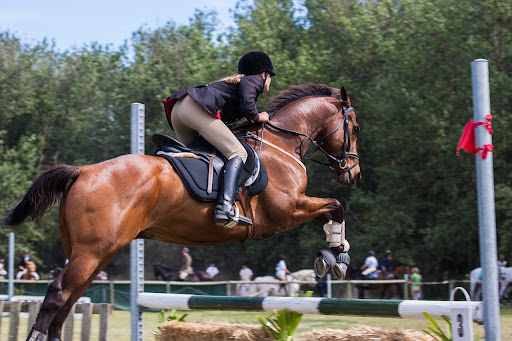Essential Horse-Riding Gear for the Horse
Beginning horseback riding may be the most thrilling and intimidating moment for anyone. With all that emotion, you might want to buy everything that catches your eye immediately, which can add to the cost of caring for your horse. However, there are affordable solutions, and you only need a little to start riding horses.

Following are some things you should put first when starting, from clothing for you to equipment for your horse:
Let’s begin,
A horse also needs equipment for comfort. Here are the essentials you’ll need when you’re first starting.
Saddle, Saddle Pad, and Girth
Purchasing your horse’s saddle can be pricey. Therefore, measure carefully to ensure you have the perfect fit because saddles are made to fit both the rider and the horse.
To ensure the longevity of your saddle, you also need to understand how to care for it. Saddle pads are utilized underneath the saddle to prevent the saddle from rubbing on your horse.
Further, to absorb sweat and prevent heat buildup, saddle pads help shield the saddle.
Don’t forget the girth, a leather belt that fastens to a saddle and wraps around the horse’s belly to secure the saddle for stability.
We cannot stress enough how important it is to get a saddle for your horse that meets your requirements, as each rider will have different issues and requirements.
For example, riders with back issues need more support saddles like the Weaver Leather Western Gel Seat Pad. Likewise, spare some time and check out this list of the best western saddle pads available. You can read the reviews, features, benefits, and drawbacks that can help you make the right choice.
Bridle
A bridle is one of the essential tools for communication when riding a horse. There are numerous choices, depending on your riding type and whether you intend to compete with your horse.
Stirrup Irons
A stirrup iron is the metal ring your feet rest in when riding a horse. They are fastened to the leather of the stirrups, which fastens to the saddle’s tree beneath the skirt.

Stirrup irons give your foot a secure place to mount your horse and a strong support foundation when riding.
First Aid Kit
Any horse owner should have a first-aid box that is well-stocked. When your horse is hurt, the last thing you want to do is spend time searching through kitchen cabins for what you need.
With a first-aid kit at hand whenever your horse needs it, it can give you enough time to call your veterinarian if needed.
You can purchase a pre-made kit or construct your own first-aid kit for horses.
Helmet
Every rider—even experts when riding a horse—must wear a helmet. But remember to get a helmet made for equestrian sports instead of just any normal helmet.
As we mentioned earlier, riding a horse is thrilling. However, you must take precautions to avoid the possibility of brain or head trauma. You can safely enjoy your new favorite sport while wearing the appropriate helmet.
Additionally, we strongly advise having a professional fit your helmet. They will take your head measurements and make a custom equestrian helmet recommendation.
Riding Pants
Breeches are a traditional style of riding pants, among many others. They comprise a thin, elastic, seamless fabric designed to fit snugly.

Breaths are designed to be entirely comfortable for the rider. You can speak with the horse using your legs if you have a decent pair. But if you decide to wear jeans instead of breeches, which is fine as well, just make sure they are well-fitting, have slim legs, and have seams.
Safety Vest
Another essential item for preventing injuries is a safety vest. Your middle part of the body, which is the stomach and chest area, will be safely guarded by the vest in case of a fall, kick, or step from the horse.
Also, fair-warning safety vests can be a little too bulky for some people. But the truth is that if you fall off a horse, this piece of clothing could save your life.
Good news for horse riders: equestrian vests of excellent quality are widely available today. Investing in an air-filled vest is one of the best ways to provide your torso with additional protection.
Boots
For every equestrian, a nice pair of riding boots is a necessity. Regular boots don’t have the safety features that riding boots provide, so wearing them isn’t a good idea.







